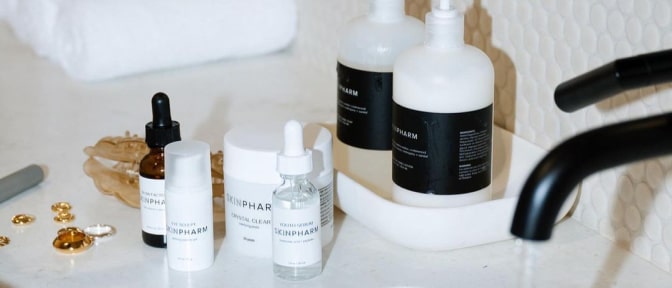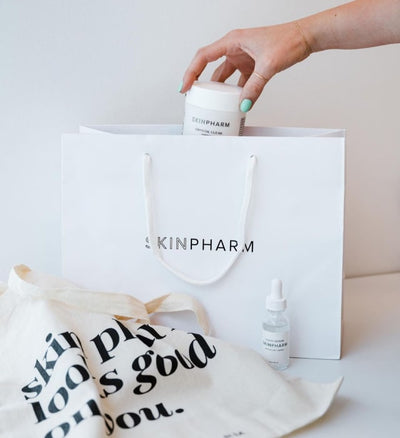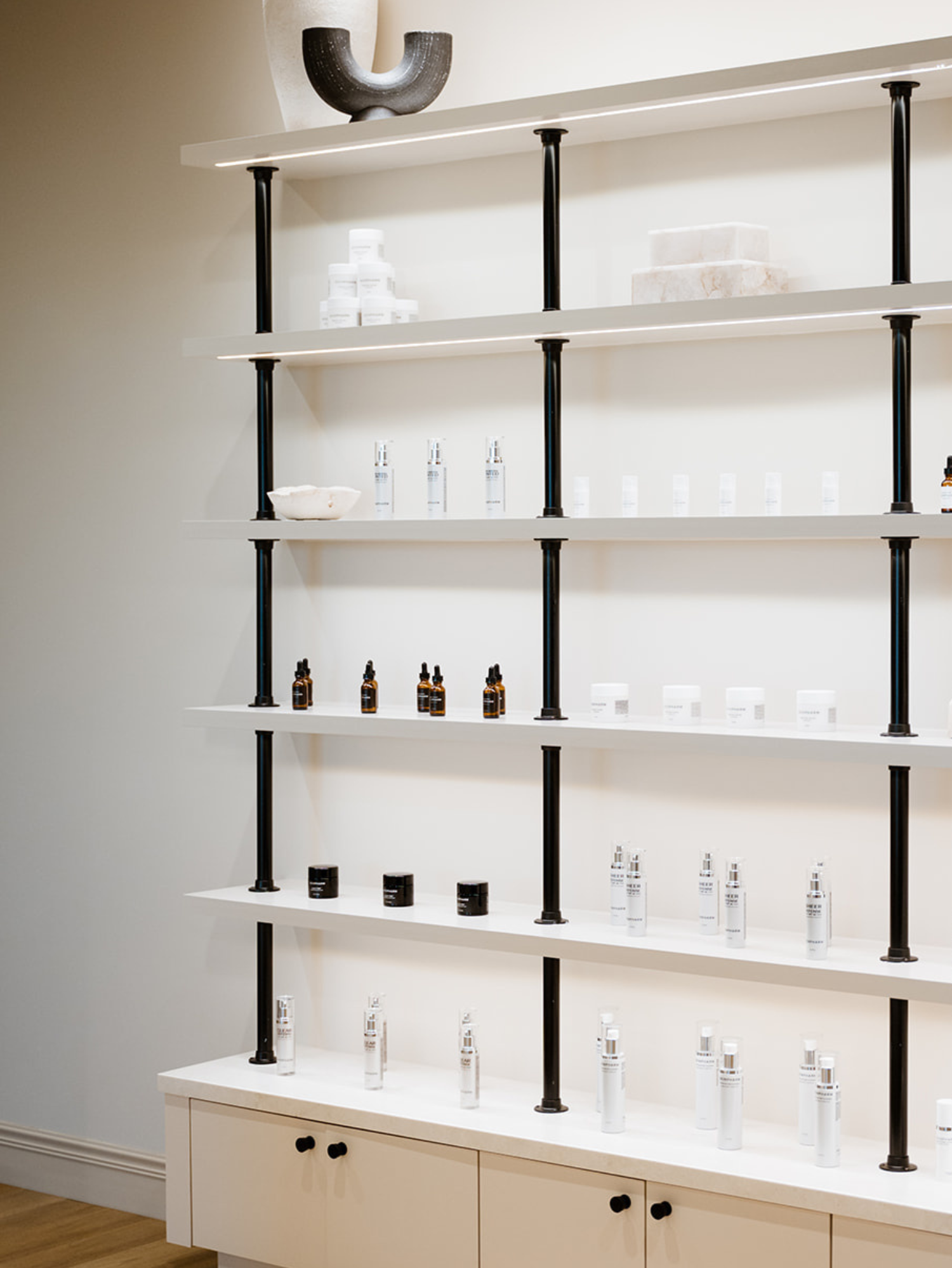Shop skin care
Clinics
VISIT OUR 9 CLINICS →
HOURS
Monday – Friday
9:30a – 5:30p
Skin Discoloration on Face: Your Options

Discoloration is one of the most common skin concerns.
Whether that means birthmarks, sun spots, age spots or some dark spots that crop up after an injury, addressing these areas of hyperpigmentation can help you feel more confident in your appearance.
From skin care treatments to our medical-grade products, there are a variety of ways you can improve and even out your skin tone. Let's talk through your options!
What determines skin color?
Skin color is determined by genetics and DNA, but at its core, it comes down to a pigment called melanin. Even people with fair skin have a small amount of melanin in their skin which, among other things, helps to protect us from the damaging rays of the sun. People with darker skin colors have higher melanin production.
Melanin is produced in the body by melanocytes, which come in two different forms: eumelanin (which is responsible for black and brown-colored pigment) and pheomelanin (which is responsible for red and yellow-colored pigment). Everyone has a combination of both melanocytes that make up the uniquely different skin colors we see across the world.
What causes skin discoloration on the face?
There are many different skin conditions that can lead to dark patches of skin, especially on your face. While we're born with birthmarks, other areas of discoloration are caused by different factors that can impact the skin. We’ll look at a handful of each.
Hormonal changes
Many women go through hormonal changes on a monthly basis as they move through their menstrual cycles. Other women experience these during pregnancy or menopause.
While these are all natural processes, these hormonal fluctuations can do a number on our skin. Most notably, they can result in dark spots or patches on the skin, which may or may not clear up once the hormones regulate.
Sun exposure or injury
Dark spots, also known as sunspots, are small areas of excessive pigmentation in the skin. When we’re talking about dark spots on the face, they are most frequently centered in “patches” on the cheeks.
Often, these patches are the result of chronic sun exposure across a lifetime. The ultraviolet radiation from the sun (UVA and UVB rays) can “trick” the skin into producing more melanin in the parts of the body that are most frequently impacted — which is why sunspots are so common on the cheeks. While sunburn might seem like an unavoidable consequence of being outdoors, just remember that it’s a serious form of sun damage, and each burn can add up over time. Always wear your SPF!
Injury can also contribute to skin discoloration. Skin pigmentation is common after an injury to the skin, which is why scars are often discolored. However, these brown spots should fade as the skin heals. Other skin injuries can cause burst blood vessels, blisters or rashes, which can also cause some extra redness.
Age
One last factor that can impact skin discoloration on the face is age. As we age, certain areas of the skin may develop additional melanin — either as a result of scarring or just genetic changes to your DNA. These areas of discolored skin are often called age spots or liver spots, although they aren’t related directly to the liver.
How can you address skin discoloration?
If you’re dealing with areas of discoloration, we're here to help! The right products, active ingredients and skin treatments can make a difference.
Microneedling
One way to fade the appearance of skin discoloration on the face while reducing the appearance of scarring, uneven texture and a loss of elasticity is microneedling. Microneedling helps resurface the skin to support natural collagen production and encourage the development of new skin cells, resulting in a more youthful, firm and radiant complexion.
Using just small needles on the skin (with a numbing cream to keep you comfortable), microneedling tricks your skin into thinking it needs to heal an injury. The result is a boost in collagen that reveals refreshed, smooth skin.
Chemical peels
Chemical peels can also help fade the appearance of skin discoloration, although the process works gradually. Chemical peels use active ingredients like topical salicylic acid to help encourage the production of new skin cells to replace the older, discolored ones.
Chemical peels done in a clinic setting contain much higher amounts of active ingredients than their over-the-counter cousins. That means there is a longer amount of time required to heal from those peels — so you'll want to factor in that extra downtime when scheduling your treatment. But they're also much more effective!
Nightly skin care
Although it takes consistent use to see results from skin creams and serums, incorporating the right active ingredients into your routine can make a big difference over time.
Using ingredients like arbutin, anti-aging peptides and licorice extract in your nightly routine can help make subtle changes to your skin. Over time, you’ll be shocked at just how much of a difference they can make.
Don’t forget the sunscreen
One way to protect yourself from developing discoloration in the future is to make sure that you always wear sunscreen. Look for options that are non-comedogenic (meaning they won’t clog your skin) and have an SPF of 35 or above. There are even tinted options that you can use to keep your skin looking even more radiant while you stay protected from the damaging effects of direct UV radiation.
The bottom line...
Skin discoloration on the face can impact how you feel about yourself — even if you’re the only one that notices those small dark spots. Minimizing the appearance of hyperpigmentation can help you feel more confident, and our advanced practice providers are here to help! Book a skin consultation with us to learn more about products and treatments that can help you achieve your skin goals.
SOURCES:
Human Skin Color Variation | The Smithsonian Institution's Human Origins Program
How to fade dark spots in darker skin tones | American Academy of Dermatology

















